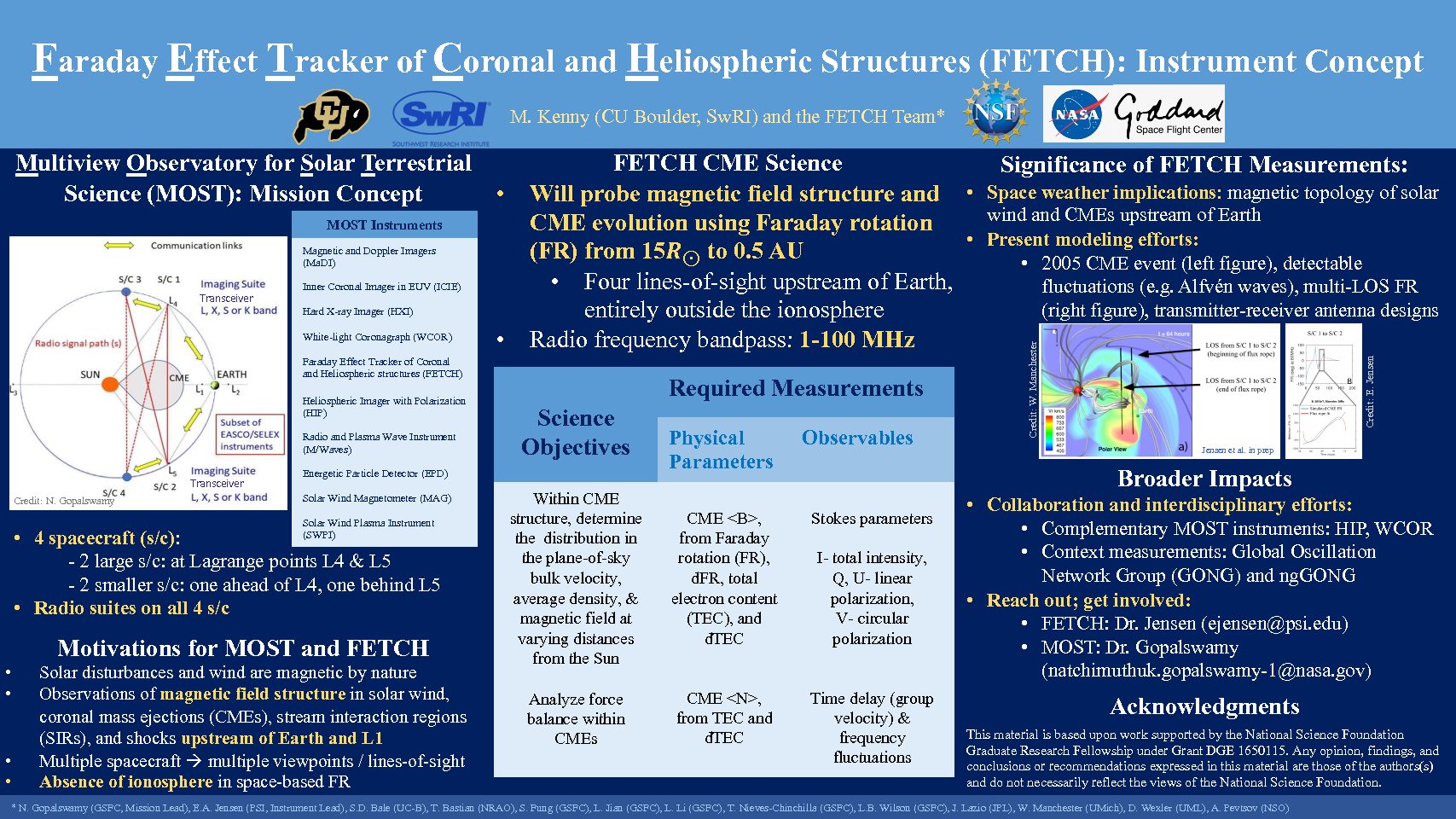Authors: Megan Kenny (University of Colorado, Boulder) Liz Jensen (Planetary Science Institute) Shing F. Fung, Lynn Wilson III, Lan Jian, Nat Gopalswamy, Teresa Nieves-Chinchilla (Heliophysics Division NASA/GSFC) George Voellmer, Lloyd R. Purves, Lihua Li, Qian Gong (NASA/GSFC) Alexei Pevtsov (National Solar Observatory) Jason Kooi (Remote Sensing Division, Code 7213 U.S. Naval Research Laboratory) David B. Wexler (University of Massachusetts Lowell) Stuart Bale (University of California Berkeley) Tim Bastian (National Radio Observatory) Joseph Lazio (NASA/JPL) Brian Wood (US Naval Research Laboratory) Ward B. Manchester IV (University of Michigan)
The Faraday Effect Tracker of Coronal and Heliospheric structures (FETCH) is a new instrument concept in development to probe coronal and interplanetary magnetic field structures in the ambient solar wind, corotating interaction regions (CIRs) and coronal mass ejections (CMEs) as they evolve in the inner heliosphere. FETCH is one of the ten instrument concepts for the Multiview Observatory for Solar Terrestrial (MOST) science mission. FETCH will measure Faraday rotation (FR) of linearly polarized spacecraft radio signals transmitted along four lines of sight provided by the four MOST spacecraft: two large spacecraft deployed at Sun-Earth Lagrange points 4 and 5 and two smaller spacecraft, one ahead of L4 and the other behind L5. FETCH will transmit and receive at selected radio frequencies in the 150-175 MHz range for lines of sight with solar impact parameters from 15 solar radii to 0.5 AU. The FR measurements will be obtained from the Stokes polarization parameters, while additional plasma parameters – such as electron column density – will be extracted from other signal diagnostics. The FR yields the line-of-sight (LOS) integrated product of electron number density and LOS-projected magnetic field. The multifrequency FR data and four lines-of-sight will be used to constrain the magnetic field topology and dynamics of interplanetary plasma structures upstream from Earth and before L1. Unique to this FR experiment, the FETCH transmitter-receiver instrumentation is positioned such that the entire sensing path remains in interplanetary space, thus avoiding the complications of trans-ionospheric FR observations. Coronal FR studies over the last 30-40 years have informed empirical magnetic field models and measurements of plasma density and plasma density fluctuations. By eliminating the principal limitation of said studies, the intervening ionosphere, the FETCH system provides a major advancement to coronal FR science. The key science objectives of FETCH include characterizing CME magnetic field structure and flux rope orientation and tracking CME propagation and shock signatures. Other science objectives include understanding magnetic field features of CIRs in the extended corona and heliosphere and determination of large-scale MHD wave organization in the region of 15 to 50 solar radii. FETCH will provide novel instrumentation to the MOST mission, which will build upon the achievements of the Solar Heliospheric Observatory (SOHO) and the Solar Terrestrial Relations Observatory (STEREO) missions.


